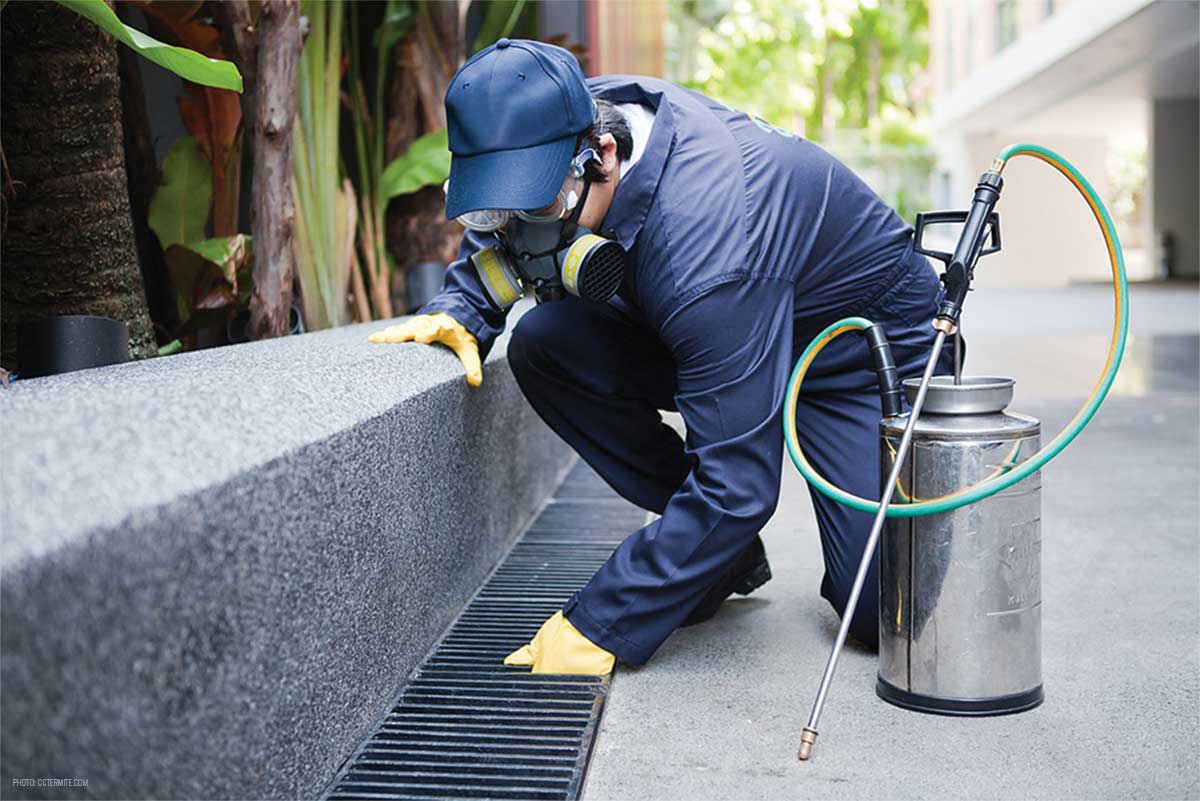Expert Parasite Control Techniques for Long-Term Outcomes
In the world of parasite control, attaining continual effectiveness and long-term results requires a thorough strategy that goes beyond plain elimination. Expert pest control techniques envelop a thorough technique that starts with a complete evaluation and evaluation, adhered to by accurate bug identification to understand their actions patterns. The application of Integrated Insect Management (IPM) concepts, combined with eco-conscious treatments, creates the keystone of sustainable bug removal. Nevertheless, the real test exists in the ongoing tracking and upkeep of the dealt with locations, guaranteeing a pest-free environment for the near future. By diving into the details of these techniques, a deeper understanding of expert parasite control methods for withstanding results emerges.
Inspection and Assessment
Upon entering a property for pest control solutions, the first action is a thorough evaluation and assessment to identify the level of the infestation and determine the most reliable therapy strategy. Professional pest control service technicians are trained to meticulously take a look at the facilities, looking for indicators of bug activity such as droppings, chomp marks, nests, or any type of architectural damage. They will certainly additionally assess the problems that may be bring in insects, such as food sources, water leaks, or access points.

Insect Identification and Behavior

Furthermore, comprehending the behavior of the recognized bug is essential to implementing reliable control actions. Understanding where pests nest, what they feed on, and their task patterns can assist pest control professionals create techniques to remove them effectively. Some bugs may be nighttime, while others are much more active throughout their explanation the day. This expertise permits the application of therapies at optimum times for maximum effectiveness.
Integrated Bug Management (IPM)
Integrated Insect Monitoring (IPM) techniques incorporate several strategies to control and avoid parasite infestations in a sustainable and eco-friendly fashion. pest control. By integrating techniques such as biological control, environment adjustment, modification of social techniques, and the use of immune varieties, IPM intends to minimize using chemical pesticides
One of the essential principles of IPM is the focus on avoidance. This positive strategy involves surveillance insect populations on a regular basis to find any kind of possible concerns prior to they escalate. By identifying insect issues beforehand, pest control procedures can be executed swiftly and properly.
Furthermore, IPM promotes using safe insect control techniques whenever feasible. This can consist of using natural killers of the insects, introducing advantageous bugs, or utilizing pheromones to interfere with mating patterns. By reducing reliance on chemical pesticides, IPM not just safeguards the atmosphere yet also assists preserve an equilibrium in the ecosystem.
Environmentally-Friendly Treatments
Implementing eco-conscious strategies in insect control procedures can effectively attend to invasions while prioritizing ecological sustainability. Environmentally-friendly treatments concentrate on minimizing the influence of bug control methods on ecological communities, non-target microorganisms, and human wellness. These methods usually involve the use of natural predators, such as ladybugs or nematodes, to control pest populations, reducing the requirement for chemical treatments. Furthermore, methods like environment control, such as readjusting wetness degrees or getting rid of food resources, can assist discourage pests without the usage of hazardous substances.
An additional key aspect of environmentally-friendly treatments is using organic and biodegradable products that break down promptly without leaving unsafe deposits in the environment. Agricultural pesticides obtained from plants like chrysanthemums or neem supply effective pest control while positioning minimal risk to non-target species. Employing methods like warm therapies or scent catches can target details parasites with accuracy, reducing the overall environmental impact of insect control techniques.
Ongoing Monitoring and Maintenance
Continual surveillance and upkeep are vital elements of efficient bug control monitoring. Recurring monitoring plays a crucial dig this role in ensuring that insect invasions are found very early and managed see this page promptly. Regular assessments by trained specialists are essential to recognize any type of indications of pest task, examine the performance of previous therapies, and make modifications to the pest control strategy as required. By checking bug populations over time, parasite control specialists can track fads, expect potential concerns, and execute safety nets to lessen the risk of future problems.
In enhancement to surveillance, maintenance methods are vital for lasting pest control success. This includes carrying out correct hygiene steps to get rid of prospective food and water resources for parasites, sealing off entry factors to avoid parasites from getting in the premises, and dealing with any type of structural problems that might assist in bug problems (bed bug dog). By incorporating continuous tracking and maintenance into an integrated pest management strategy, businesses can ensure a pest-free environment and safeguard their residential or commercial property against costly damage and health threats
Verdict
In verdict, utilizing specialist parasite control techniques such as complete evaluation and assessment, accurate pest recognition and understanding of their actions, incorporated insect management strategies, environmentally-friendly therapies, and continuous surveillance and maintenance are important for achieving lasting outcomes in bug control. By executing these techniques, individuals can efficiently manage bug invasions and maintain a pest-free atmosphere in a sustainable way.